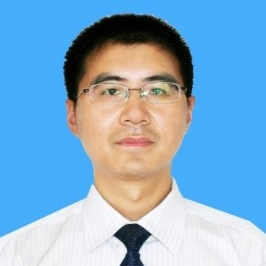Critical Metal Occurrence, Enrichment, and Application
A special issue of Applied Sciences (ISSN 2076-3417). This special issue belongs to the section "Earth Sciences".
Deadline for manuscript submissions: closed (18 June 2022) | Viewed by 12018
Special Issue Editors
Interests: mineralogy; petrology; mineral deposit
Special Issue Information
Dear Colleagues,
Critical metals, including rare metals (e.g., Li, Be, Rb, Cs, Nb, Ta, Zr, Hf, W and Sn), rare earth elements (e.g., La, Ce, Pr, Nd, MS, Eu, Gd, Tb, Dy, Ho, Er, Tm, Yb, Lu, Sc and Y), rare disperse elements (e.g., Ga, Ge, Se, Cd, In, Te, Re and Tl) and other strategic metals (e.g., PEG, Cr and Co) have been regarded as essential strategic resources for global high-technology applications. However, critical metals are categorized as rare, associated and/or fine, and these critical metal characteristics constrain our understanding of their metallogenic mechanism and efficient utilization. The present Special Issue aims to gather papers on the occurrence of critical metals and enrichment and application research, especially on refractory elements, concerning geological, geochemical, and isotopic methods. Our aim is to offer research paradigms for critical metals and provide a key basis to improve and perfect metallogenic theory, as well as improve our knowledge around critical metals.
Prof. Dr. Changming Wang
Prof. Dr. Leon Bagas
Guest Editors
Manuscript Submission Information
Manuscripts should be submitted online at www.mdpi.com by registering and logging in to this website. Once you are registered, click here to go to the submission form. Manuscripts can be submitted until the deadline. All submissions that pass pre-check are peer-reviewed. Accepted papers will be published continuously in the journal (as soon as accepted) and will be listed together on the special issue website. Research articles, review articles as well as short communications are invited. For planned papers, a title and short abstract (about 100 words) can be sent to the Editorial Office for announcement on this website.
Submitted manuscripts should not have been published previously, nor be under consideration for publication elsewhere (except conference proceedings papers). All manuscripts are thoroughly refereed through a single-blind peer-review process. A guide for authors and other relevant information for submission of manuscripts is available on the Instructions for Authors page. Applied Sciences is an international peer-reviewed open access semimonthly journal published by MDPI.
Please visit the Instructions for Authors page before submitting a manuscript. The Article Processing Charge (APC) for publication in this open access journal is 2400 CHF (Swiss Francs). Submitted papers should be well formatted and use good English. Authors may use MDPI's English editing service prior to publication or during author revisions.
Keywords
- critical metal
- refractory element
- PGE
- occurrence
- enrichment
- application
- mineral deposit
Benefits of Publishing in a Special Issue
- Ease of navigation: Grouping papers by topic helps scholars navigate broad scope journals more efficiently.
- Greater discoverability: Special Issues support the reach and impact of scientific research. Articles in Special Issues are more discoverable and cited more frequently.
- Expansion of research network: Special Issues facilitate connections among authors, fostering scientific collaborations.
- External promotion: Articles in Special Issues are often promoted through the journal's social media, increasing their visibility.
- e-Book format: Special Issues with more than 10 articles can be published as dedicated e-books, ensuring wide and rapid dissemination.
Further information on MDPI's Special Issue polices can be found here.






